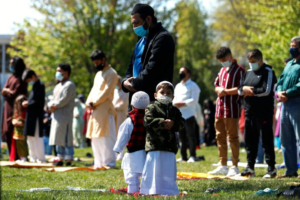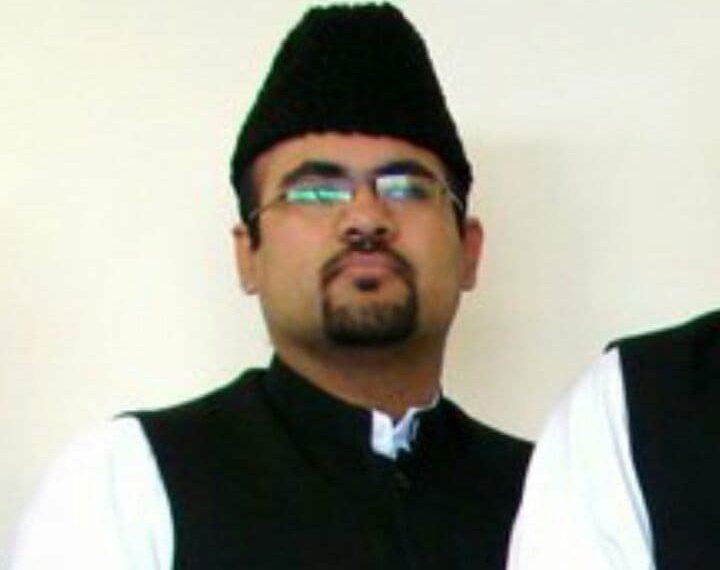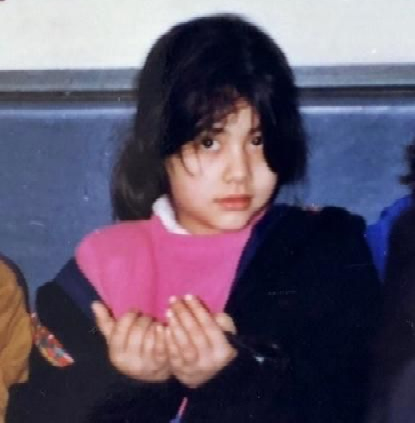Can diabetic Muslims fast safely in Ramadan? These guidelines can help.
Nafeesunnisa Syed, a resident of Palos Hills, Illinois, had been prone to exhaustion, dizziness and frequent fainting spells ever since she was diagnosed with Type 2 diabetes in 1994. Despite her symptoms, she continued to fast during Ramadan, Islam’s sacred month, when all adult Muslims are required to abstain from food, water and intimacy from sunrise to sunset for 29 to 30 days — as long as their health permits.
Syed took medication to manage her disease, but after fainting again in 2010 at a friend’s dinner party, she was rushed to the emergency room, where doctors informed her that she had narrowly avoided a stroke. Alarmed, her family intervened and asked her to stop fasting. She hasn’t fasted since.
“I pray, I read the Quran more often, I give charity, I try to do all the other things I’d normally do with my family during Ramadan that brings me peace,” said Syed.
Syed is not alone. A study published by PLOS ONE states that many diabetic Muslims choose to fast against medical advice during Ramadan, potentially increasing their risk of acute complications. Most have not been educated on how to fast safely or adjust their glucose-lowering medication.
Some patients said they did not discuss fasting for Ramadan with their health care providers due to a lack of cross-cultural understanding and communication, and the doctor’s inadequate knowledge and understanding of the significance of Ramadan for Muslims.
But awareness is increasing. In 2016, the International Diabetes Federation collaborated with Diabetes and Ramadan International Alliance, an international volunteer group of hundreds of medical professional educators, diabetic patients and their families and religious scholars of diverse faiths from around the world, to create a series of guidelines for managing diabetes during Ramadan. According to the International Diabetes Federation, there are more than 150 million Muslims who suffer from diabetes worldwide.
The guidelines, available in six languages, are divided into two categories for two audiences: health care professionals and diabetic patients. The former category offers information for educating patients, while the latter has tips on assessing risk levels, monitoring blood glucose, knowing when to stop fasting and adjusting medications. As of 2021, the guidelines have been downloaded more than 45,000 times across the world.
“The guidelines will empower health care professionals to be more proactive, to know what advice to give patients fasting for their religious beliefs, and how that impacts their health,” said Dr. Mohamed Hassanein, chair of the Diabetes and Ramadan International Alliance and senior consultant at Endocrinology Dubai Hospital in Dubai.
In addition to the guidelines, the Diabetes and Ramadan Alliance offers other resources such as DAR Academy — an online application that enables health care professionals to attend lectures, download updated resources and use the “risk calculator,” a tool that measures 14 distinct aspects of a patient’s health and circumstances and sorts them into three categories: green (low risk of fasting), amber (moderate risk) and red (high risk).
“Doctors tell me this has lifted a weight off their shoulders and unified their approach to treating their patients who seek advice on whether to fast or not,” said Hassanein.
To make informed decisions while delivering care to their patients, Hassanein believes it’s important for health care professionals to have diverse religious literacy. His desire to form the alliance was rooted not only in the need to bridge a knowledge gap about Ramadan and diabetes, but in his Islamic beliefs.
“Islam does not advocate anything that harms the body at all,” he said. “While fasting during Ramadan is obligatory for healthy adults, it includes in the same (Quranic) verse the exemption for people who are ill, traveling, pregnant, breastfeeding, among other reasons.”
According to Islamic scholars, people who need to break their fast for a day due to illness or travel can make up for it by fasting another day. Others can perform fidya — a religious donation paid by individuals who cannot fulfill the obligation of fasting due to illness or old age. Fidya payments are meant to feed a miskeen (person in need) for each of the fasting days missed.
Though the reception to the guidelines has been positive, its adaptation by health care workers has been slow, especially in North America.
Dr. Luma Ghalib, an endocrinology expert from Columbus, Ohio, said practicing physicians in the U.S. have little awareness about diabetes and Ramadan fasting, contributing to the slow adaptation of the guidelines, which, she said, are superior to the information available from the American Diabetes Association.
Ghalib has been attending medical conferences, webinars and endocrinological societies across the U.S. to raise awareness about the guidelines and the importance of religious literacy for health care workers.
“Having awareness of religious or nonreligious minority groups and their different practices, health issues, risk factors, language barriers, and just being aware that there are people doing things differently than the general majority, will improve how we provide health care to them,” said Ghalib.
It’s not just the health care workers who need to be more aware, Ghalib said. She advises diabetic patients to become more informed about their choices and what they need to do to continue fasting while taking care of their health. She also tells them to trust their doctors.
“A lot of minorities unfortunately don’t trust their health care systems, due to previous experiences and misunderstandings. But have good faith in your physicians; they’re trying to help you,” said Ghalib. “And speak up, if you’re not sure. Ask questions until they listen to you. The third piece of advice is to not wait until the last minute. If you’re planning to fast … having an action plan ahead of time is the best thing you can have.”
Both Ghalib and Hassanein hope the Diabetes and Ramadan guidelines will help not only Muslims, but any diabetic patients who are fasting for religious practices such as Lent, Yom Kippur, Tisha B’av, Fast of Esther or nonreligious purposes, like intermittent fasting.
“Fasting is not about Muslims; it’s about flexibility in lifestyle and respect for different people’s views, cultures, habits and religion,” said Hassanein. “The risks of fasting could be with someone who’s not religious at all, but for some reason, they may have not had any food or drink for that particular day. So having that understanding of what sort of measures I need to take is important.”
As for Syed, the diabetic patient from Illinois, she believes these guidelines will be helpful not just to strengthen doctor-patient relationships but to help nondiabetic Muslims understand and be less judgmental of diabetic Muslims who cannot fast during Ramadan.
Courtesy: RNS




